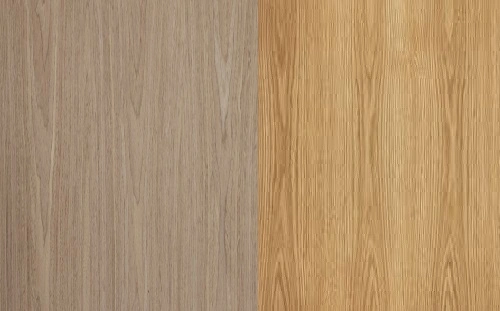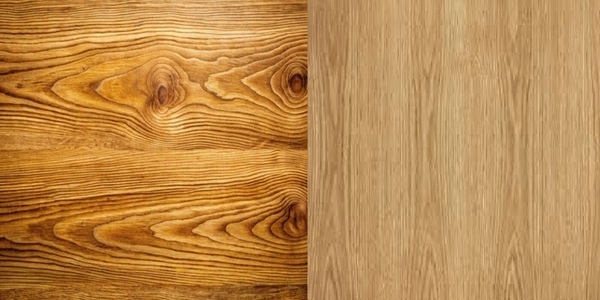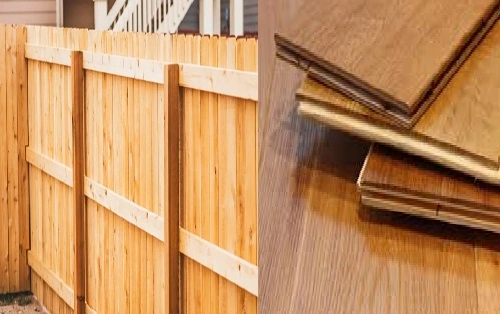When choosing materials for furniture, cabinets, or interior design, two popular options often come up: wood veneer and laminate. Both are used to achieve a polished, wood-like appearance, but they differ significantly in composition, durability, cost, and aesthetics. Selecting the right material depends on your specific needs, budget, and desired look.
This article delves into the differences between wood veneer and laminate, their advantages and disadvantages, and where they work best in your home.
What is Wood Veneer?
Wood veneer is a thin slice of natural wood, usually about 1/40th of an inch thick, glued onto a substrate like plywood, particleboard, or MDF (medium-density fiberboard). Veneers are made from a variety of wood species, including oak, walnut, cherry, and maple, giving them a genuine wood look and feel.
Advantages of Wood Veneer:
- Natural Appearance:
- Because it’s real wood, veneer has a natural grain pattern and texture, offering a warm and authentic look.
- Customizable Finishes:
- Veneer can be stained, sanded, and refinished, allowing for versatility in color and style.
- Eco-Friendly:
- Veneer uses a thin layer of wood, making it more sustainable than solid wood since it maximizes the yield from a tree.
- Premium Look:
- Veneered furniture and panels often have a high-end, luxurious appearance.
Disadvantages of Wood Veneer:
- Maintenance:
- Veneer is susceptible to scratches, stains, and water damage, requiring regular care and cleaning.
- Cost:
- High-quality wood veneers can be expensive, especially if made from rare wood species.
- Durability:
- While more durable than solid wood in some cases, veneer can peel or chip if exposed to excessive moisture or rough handling.
Common Uses of Wood Veneer:
- High-end furniture
- Cabinetry
- Decorative wall panels
- Office furniture
What is Laminate?
Laminate is a synthetic material made by fusing multiple layers of paper or fabric with resin under high pressure. The top layer is a printed design, often mimicking the appearance of wood grain, covered with a protective clear coat for durability. Laminate is typically applied to a substrate like MDF or particleboard.
Advantages of Laminate:
- Durability:
- Laminate is highly resistant to scratches, stains, heat, and moisture, making it an excellent choice for high-traffic areas.
- Affordable:
- Laminate is more cost-effective than wood veneer while still offering a wood-like aesthetic.
- Low Maintenance:
- It’s easy to clean and doesn’t require special care or refinishing.
- Variety:
- Available in a wide range of colors, patterns, and finishes, laminate can mimic wood, stone, or even metallic surfaces.
Disadvantages of Laminate:
- Artificial Appearance:
- Although modern laminates can closely replicate wood grain, they lack the natural texture and warmth of real wood.
- Non-Repairable:
- Laminate cannot be sanded or refinished. Once it’s damaged, the only option is to replace it.
- Environmental Concerns:
- Laminate is made from synthetic materials and isn’t biodegradable, making it less eco-friendly than veneer.
Common Uses of Laminate:
- Budget-friendly furniture
- Kitchen countertops
- Cabinetry
- Flooring
Key Differences Between Wood Veneer and Laminate
| Feature | Wood Veneer | Laminate |
|---|---|---|
| Material | Natural wood layer | Synthetic, made from resin and paper |
| Appearance | Authentic, natural wood grain | Artificial, with printed wood-like designs |
| Durability | Moderate; prone to scratches and water damage | High; resistant to scratches, stains, and heat |
| Maintenance | Requires care; can be refinished | Easy to clean; cannot be refinished |
| Cost | Generally more expensive | More budget-friendly |
| Customizability | Can be stained, sanded, and refinished | Limited to factory-applied finishes |
| Eco-Friendliness | More sustainable; uses less wood | Less eco-friendly; synthetic materials |
| Common Uses | High-end furniture, cabinetry | Budget furniture, countertops, flooring |
When to Choose Wood Veneer
- Aesthetic Appeal:
- If you’re seeking a natural and authentic wood look, veneer is the best choice. Its natural grain and texture add warmth and sophistication to any space.
- Custom Projects:
- Veneer is ideal for projects where you want the option to refinish or customize the wood’s color or finish over time.
- High-End Applications:
- For premium furniture or cabinetry, veneer provides a luxurious appearance that mimics solid wood without the high cost.
Best Areas to Use Veneer:
- Dining tables, office desks, and bedroom furniture
- Custom cabinetry in kitchens or bathrooms
- Decorative wall panels or feature walls
When to Choose Laminate
- Durability and Low Maintenance:
- If your furniture or surfaces are in high-traffic areas or exposed to spills, laminate is a better choice due to its resilience.
- Budget-Friendly Projects:
- For cost-conscious homeowners, laminate provides a wood-like appearance without the expense of veneer.
- Modern Design Options:
- Laminate offers a broader range of styles, including sleek, modern finishes like glossy, matte, or textured surfaces.
Best Areas to Use Laminate:
- Kitchen countertops and cabinets
- Office furniture and workstations
- Flooring in commercial spaces or rental properties
Combining Wood Veneer and Laminate
In some cases, combining veneer and laminate can achieve the best of both worlds. For example:
- Use veneer for the visible surfaces of furniture (e.g., cabinet doors or table tops) to enhance aesthetics.
- Use laminate for the hidden or interior surfaces (e.g., drawer interiors or cabinet backs) for cost savings and durability.
Conclusion
Choosing between wood veneer and laminate comes down to your priorities: aesthetics, durability, budget, and maintenance. Wood veneer offers the natural beauty and warmth of real wood, making it the perfect choice for high-end furniture and design projects. On the other hand, laminate excels in durability, affordability, and ease of maintenance, making it a practical choice for everyday use in high-traffic areas.
For a balance of style and function, consider the specific needs of your project and the environment where the material will be used. With the right material, you can create furniture and spaces that are not only functional but also beautiful and enduring.


